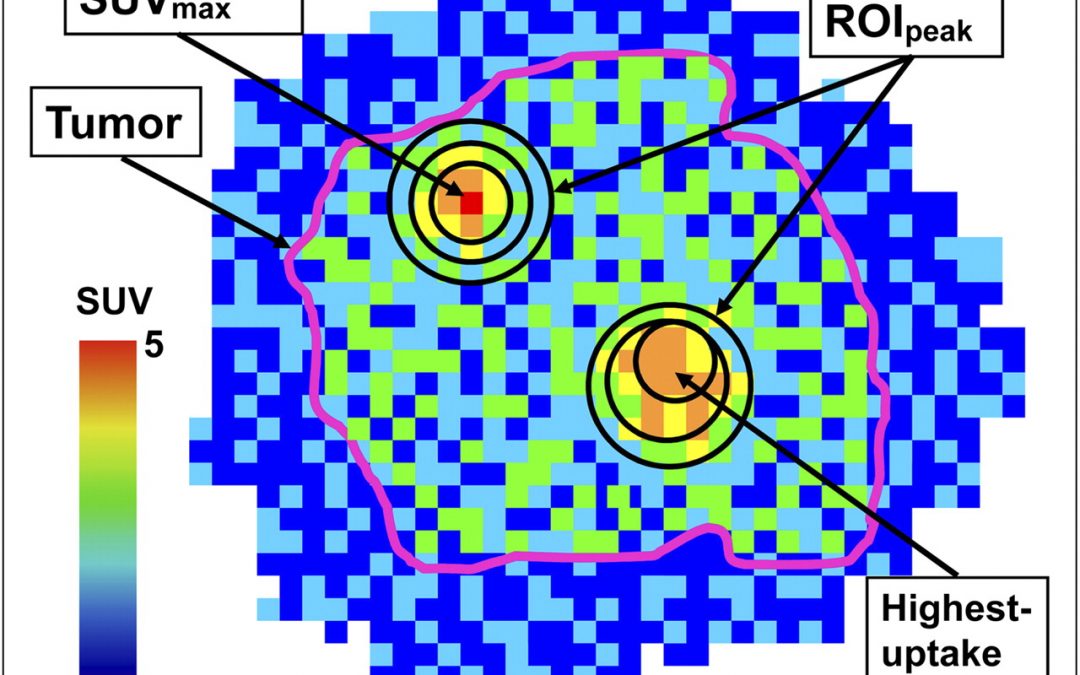standardized uptake values (SUV)
Positron emission tomography (PET) has become a widely utilized functional imaging modality. The combination of x-ray computed tomography (CT) with PET gives both structural and functional information from a single two part scan as well as providing an attenuation map to improve the quality of the PET through attenuation
correction. The values generated by PET are frequently examined quantitatively and used to track the progression of disease and treatment. PET voxel values are typically displayed in terms of standardized uptake values (SUV). SUV in a particular volume is defined in Equation 1, where values are decay corrected.

Since SUV is directly proportional to the radioactivity concentration detected, any error in the SUV can lead to error in patient care. For this study, results were analyzed in terms of radioactive concentration. Ultimately patient radiation dose from CT is dependent on the number of photons used to acquire images. Recent advances in CT technology and technique, specifically modulating the x-ray tube current as the gantry rotates, have provided the opportunity to lower patient dose while still providing diagnostic quality scans. Modulating the tube current is done because less photon flux is required to achieve the same quality image in smaller parts of the body, such as the neck and legs, while more is required across the torso and abdomen. General Electric’s (GE) algorithm for modulating the x-ray tube-current is called SmartmA, and the user-defined parameter that controls it is called the noise index (NI), and is a value prescribed by a physician or specified in a protocol when scanning a patient. The prescribed NI value approximately equals the resulting standard deviation of voxel values in Hounsfield units at the center of a uniform phantom. Therefore lower NI values correspond to a lower noise image but also deliver dose.


